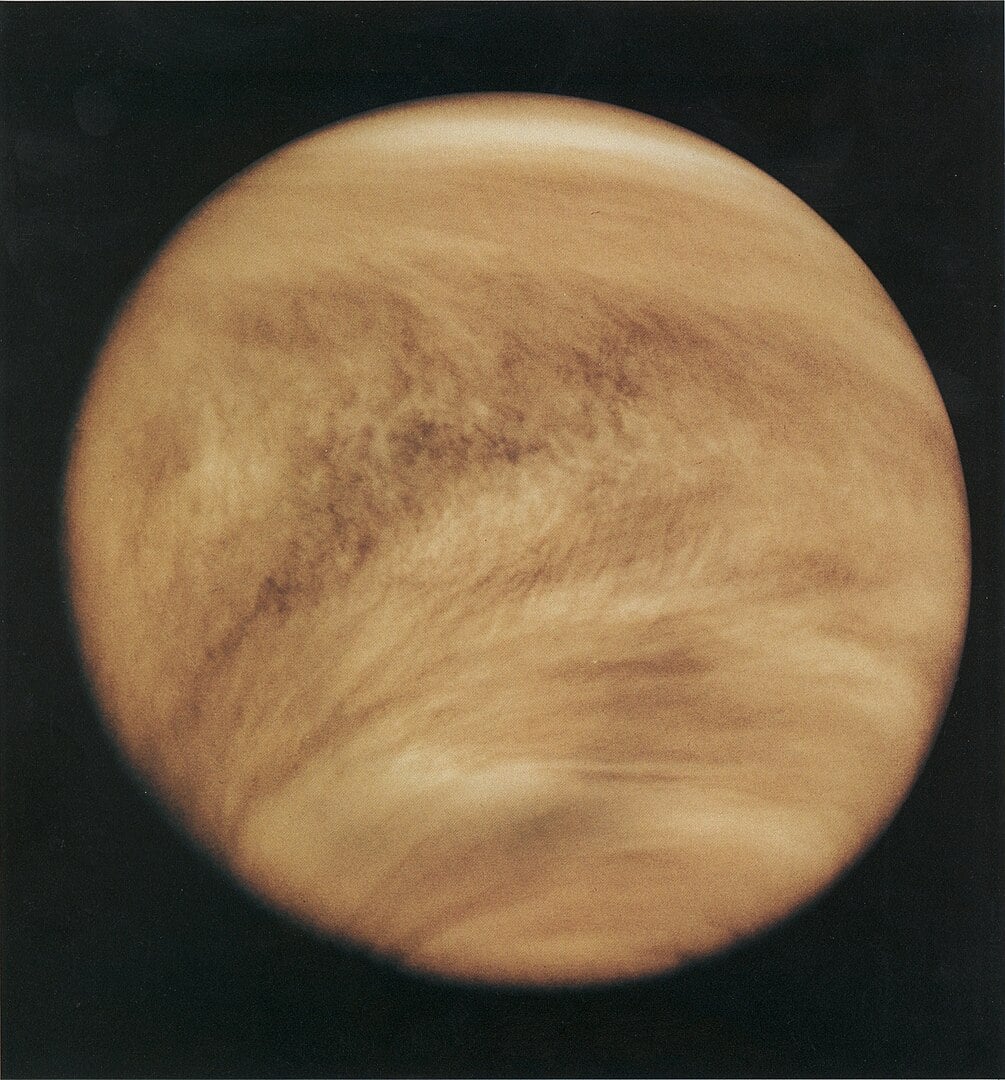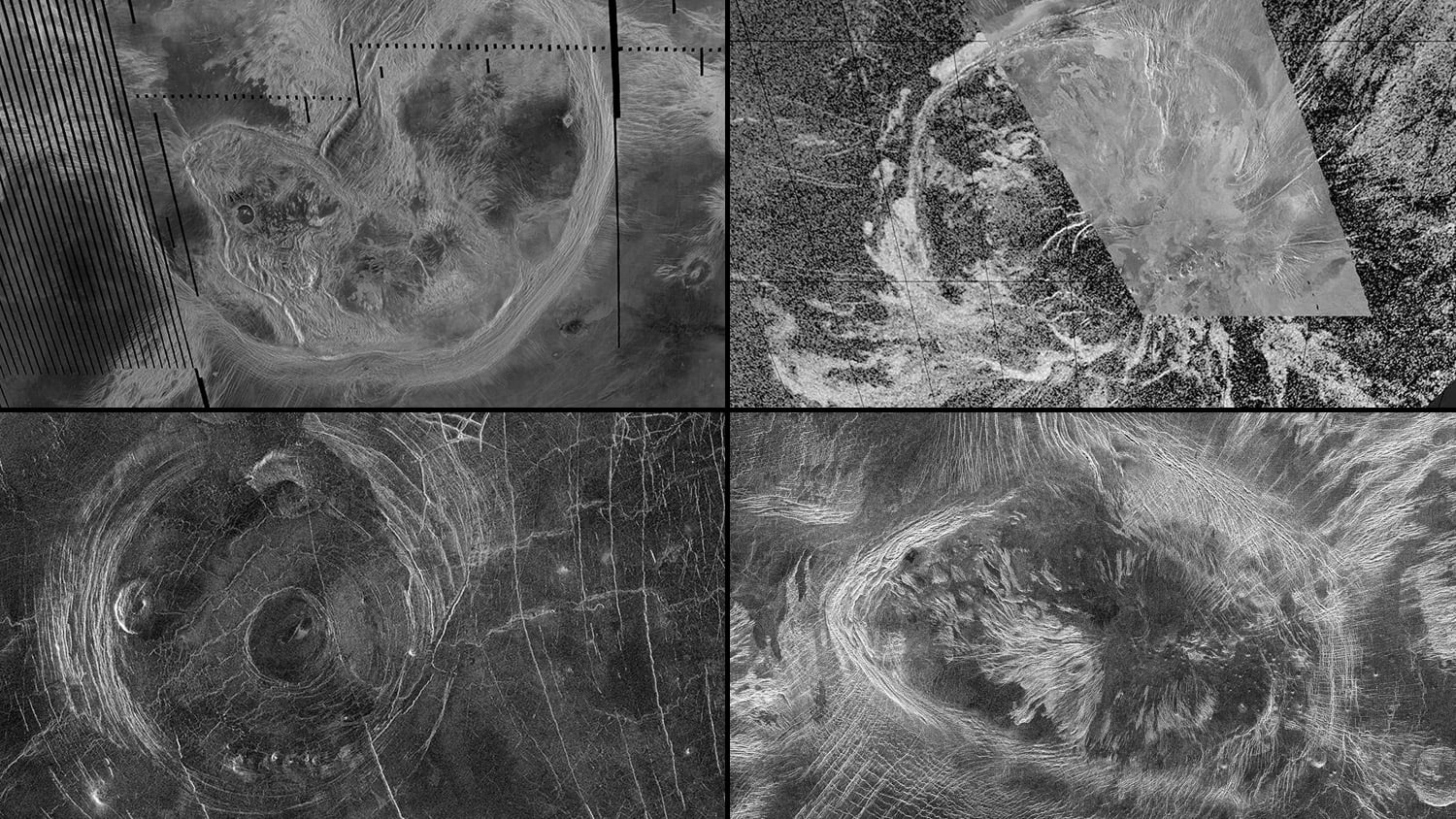Venus, Earth's scorching twin, is our closest and most extreme planetary neighbour. Perpetually shrouded in thick, sulfuric acid clouds, it endures crushing atmospheric pressure 90 times Earth's and temperatures hot enough to melt lead. Despite appearing serene from space, the Venusian landscape features vast volcanic plains, towering mountains, and bizarre terrain forged in geological activity. Perhaps habitable billions of years ago, Venus now serves as a stark cautionary tale of runaway greenhouse effects.
 Venus, the second planet in our Solar System enshrouded in cloud (Credit : NASA)
Venus, the second planet in our Solar System enshrouded in cloud (Credit : NASA)
According to new research analyzing 30-year-old NASA Magellan data, Venus is now thought to be tectonically active after all. Unlike Earth's shifting tectonic plates generating mountain ranges and valleys, Venus displays large circular structures called coronae—ranging from dozens to hundreds of miles across. It's here where hot material from the planet's mantle pushes upward against the lithosphere, creating distinctive oval formations surrounded by concentric fractures. These hundreds of coronae suggest Venus's surface is still being actively reshaped by internal forces despite lacking Earth-style plate tectonics.
 Magellanwith its Star 48B solid rocket motor undergoing final checks at the Kennedy Space Center (Credit : NASA/JPL)
Magellanwith its Star 48B solid rocket motor undergoing final checks at the Kennedy Space Center (Credit : NASA/JPL)
The new study published in Science Advances reveals these active processes through analysis of these corona formations. The circular features may offer insights into Earth's early development too before plate tectonics began. The team combined gravity and topography measurements from Magellan to understand the subsurface forces currently reshaping Venus.
"Coronae don't exist on modern Earth but likely did when our planet was young," - Gael Cascioli from the University of Maryland
The team used advanced 3D modelling to reveal that most studied coronae (52 of 75) have hot, buoyant mantle material beneath them actively driving tectonic processes. These processes include Venus-style subduction (where surface material spreads outward from rising plumes and pushes surrounding material downward), lithospheric dripping (where cool material sinks into the hot mantle), and volcanic activity where molten rock pushes through thicker crust—all providing crucial insights into planetary evolution.
The research builds on recent discoveries of volcanic eruptions at Maat Mons, Sif Mons, and Eistla Regio. While these findings are groundbreaking, researchers need higher-resolution data to fully understand Venus' tectonic activity. NASA's upcoming VERITAS mission, launching no earlier than 2031, will use high-resolution gravity data to further illuminate these planetary processes.
"VERITAS gravity maps will improve resolution by at least two to four times, potentially revolutionising our understanding of Venus' geology and its implications for early Earth," - Suzanne Smrekar, VERITAS principal investigator.
This renewed understanding of Venus as a geologically dynamic world challenges decades of assumptions. As we continue to unravel Venus's mysteries through both reexamination of existing data and upcoming missions, we may not only piece together its evolutionary past but also gain critical insights into Earth's potential future.
Source :NASA's Magellan Mission Reveals Possible Tectonic Activity on Venus
 Universe Today
Universe Today
